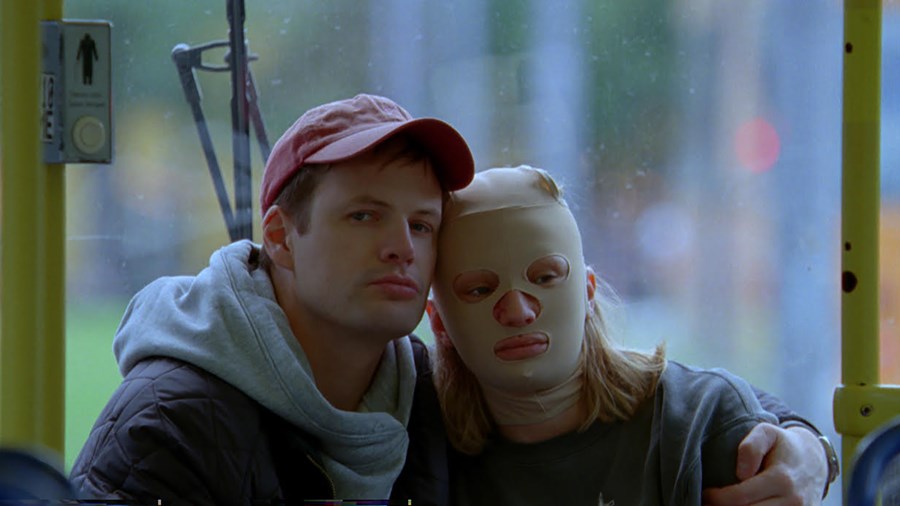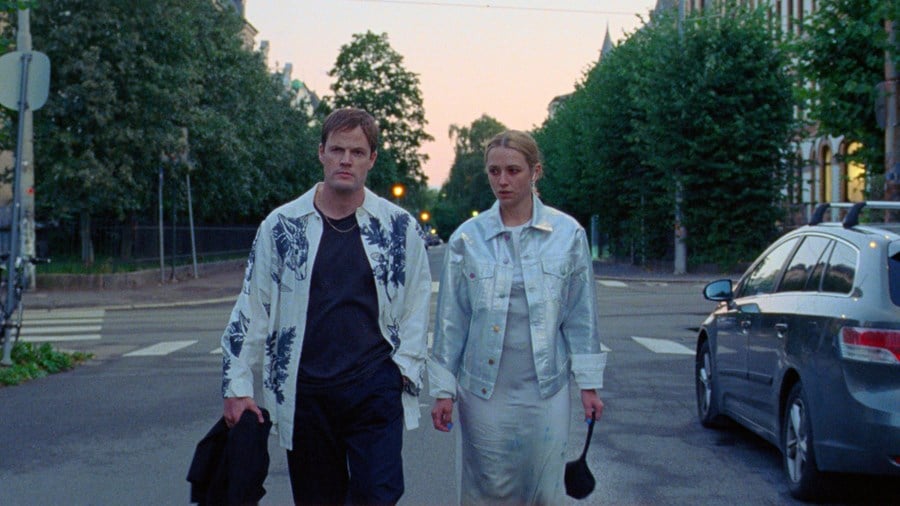Signe is self-absorbed to the point of self-destruction, but her reasons for rampant attention-seeking are more genuine than they appear, says Yasmin Omar.

The main character of Sick of Myself has main character syndrome. Kristine Kujath Thorp’s Signe considers herself to be the centre of the world – no, that’s not quite big enough – the universe. She’s a self-aggrandising, pathological liar with a sharp tongue who tunes out of conversations that aren’t about her. Other people (waiters, paramedics etc.) are merely extras in her story, their faces obscured from view. Signe’s most reprehensible act is that she deliberately makes herself ill by abusing a black-market drug, which leads to full-body rashes, facial swelling, hair loss, seizures and throwing up blood.
It is the epitome of privilege to have so few problems that you seek them out. No one really going through it would ever sully a clean bill of health like she does. Even the way Signe rolls little yellow pills into her mouth like coins into a slot machine shows that sickness is a game to her. It is… until it isn’t. The first time I watched Sick of Myself, I found it viciously funny; the second, it was unspeakably sad. Our protagonist doesn’t want attention for attention’s sake. Attention, to her, is love. Contracting this disease is a test: how much do those around her really love her?

Sick of Myself (2022)
Her live-in boyfriend Thomas (Eirik Sæther), a pompous found-object artist who pilfers chairs from furniture shops, certainly doesn’t seem to. He constantly undermines her in company, putting her on the spot, denigrating her accomplishments and diminishing her contributions to his art. (There’s also a suggestion that he hasn’t told his colleagues that he’s in a relationship, since they mistake Signe for his sister at his exhibition launch.) It’s not much better when they’re alone. Thomas barely makes eye contact with her and is often seen by himself, hunched over his laptop. Despite his patent disinterest and disrespect, Signe longs for his approval.
That her dialogue is dominated by questions implies as much – there are several moments of her weakly calling out ‘Thomas?’ with heart-tugging resonance. When she ‘discovers’ her rash (read: knew it was there but wants Thomas to spot it), she asks him twice ‘Do you think it’s serious?’, then follows up with ‘It looks pretty serious, doesn’t it?’ Signe’s line of enquiry pressures him to say he’s worried, because if he’s worried he must care about her. Thomas withholds affection from his girlfriend to the point of callousness. She asks him (at it again!) to read an interview she gave the tabloid VG and, once he has, he simply tells her he’s finished it and doesn’t offer an opinion. Signe presses him, her beseeching eyes willing him to see her, love her. The camera zooms in as she attempts to chip away at his unfeeling exterior: ‘What would you think of it if you didn’t know me?’, ‘Did you like my quotes?’, ‘Are you proud of me?’ He does, when prompted, admit he’s proud of her, and Signe breaks down crying, happy tears streaming down her cheeks. This is what she wanted. All of her scheming and lying was for this: her partner’s validation.

Sick of Myself (2022)
Thomas loves himself, that much is clear. He prioritises his own interests over Signe time and time again. He breaks his promise to pick her up from a doctor’s appointment to star in a magazine shoot; he makes her continually reassure him that her illness isn’t contagious; he puts her down to build himself up. His only instance of public tenderness, putting his arm around Signe and kissing her, is to impress another woman with his ‘doting boyfriend’ act on the bus. It therefore stands to reason that Signe acts outrageously in an effort to align herself with Thomas – following the logic that if he loves himself, all she need do to receive that same love is become him. (His character is, in many respects, an outsized version of hers anyway.)
Sick of Myself’s writer-director Kristoffer Borgli establishes a number of parallel scenes that show Signe directly mimicking her boyfriend. To cut her off at a lunch with friends, Thomas says: ‘Not to change the subject completely, but can I run some titles by you for my exhibition?’ Later, at the same restaurant with the same friends, Signe interrupts Thomas with identical phraseology: ‘Not to change the subject completely, but a toast to me becoming a model?’ Borgli similarly draws connections between two party sequences by staging comparable blocking. In the first, Thomas dominates the discussion, leaving Signe sulking away from the group; the second, after her diagnosis, reverses the situation and places Thomas on the sidelines. She is pushing her already exasperating behaviour to the extreme to give her boyfriend what she thinks he wants.

Sick of Myself (2022)
Try as she might, Signe doesn’t always get what she wants. Most of what she does is to get a rise out of Thomas, be that returning home in a white shirt crimson with blood (not her own, I hasten to add), or feigning a life-threatening nut allergy. Through her actions, she’s begging him to consider what he would do if she died and, more widely, to value the time they have together now. As previously discussed, Signe’s efforts seldom elicit the desired response. When all else fails, she retreats into fantasy. Sick of Myself is firmly rooted in Signe’s point of view, and explores her state of mind in multiple imagined sequences. Some are worst-case scenarios (Anders Danielsen Lie’s doctor criticising her ‘bad personality’), others are sources of comfort (a friend reacting favourably after she comes clean about making herself ill), but they’re all focused on how others perceive her.

Sick of Myself (2022)
During her fantasies, Thomas is deeply, irrevocably in love with her. In one scene, he grovels to Signe on his knees, begging her to be his muse; in another, he protects her pregnant self from walls of clamouring photographers. The achievements she visualises – performing on TV, featuring on i-D’s cover, winning the Nobel Peace Prize – are secondary to their sought-after effect on her relationships. It’s not important that Signe’s imagined autobiography The Sick Child is a bestseller, it’s that when Thomas reads it he’s fully engrossed and tells her, choking back sobs, that it ‘makes me fall in love with you all over again’. Through her fantasies, Signe receives the love and attention she cannot get in real life, which explains why she escapes into these fictions more and more as the film goes on, and her partner and friends start slipping away. It’s a pretty crushing realisation, almost as sad as the fact that she reaches climax by envisioning her own crowded funeral during sex. Signe’s erotic fantasy is that people care about her. How bleak.
I cannot, and will not, defend the ludicrous lengths Signe goes to for attention. Recklessly forsaking her own health for pity’s sake is indefensible. It’s also understandable. Signe’s actions, ill-conceived though they may be, are a cry for help. Every pill she pops brings her a step closer to the love and affection she desperately craves (to her mind, at least). The brilliance of Sick of Myself is its ability to explore Signe’s monstrousness and humanity in tandem: the film empathises with her, without ever letting her off the hook. So, no, Signe isn’t wholly irredeemable. She just isn’t wholly redeemable either.




